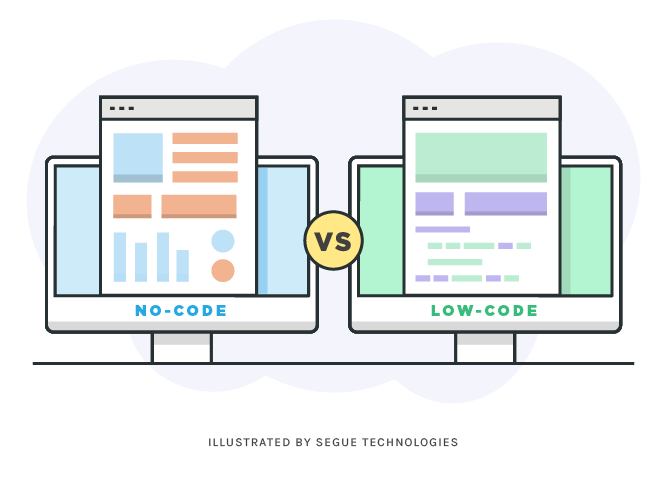
If you are reading this article you are likely involved in the development of a new software system for your organization or maybe you are in the process of updating and migrating an older system into the cloud. Regardless of which category you fit into, there are numerous ways to tackle these challenges.
The traditional development approach is to work with your team to gather requirements, develop your plan, and work with a development team to custom code an application to meet those needs. Although this is an absolutely acceptable method, these projects often run over budget or are delayed due to factors such as:
- Inaccurate estimation
- Software coding errors
- Infrastructure delays, or
- Testing challenges
A traditional development approach also creates the need for a continuous maintenance cycle to keep the custom software application up-to-date and secure.
Alternatively to traditional development, many organizations are opting
No-Code Platforms
A true no-code platform is essentially software that writes software. Meaning your business application can be developed without writing one line of code or requiring any programming experience whatsoever. These platforms provide a visual software interface that allows the user to create the application with easy-to-use features such as:
- Drag and drop modules
- Picklist selection boxes
- Spreadsheet imports, etc.
No-code platforms are used most frequently to replace simple business cases, spreadsheets, or manual processes that don’t require connections to 3rd party systems (not to say that this can’t be accomplished with some no-code platforms). They also tend to be driven by specific use cases, such as Airtable, which is a cloud-based tool that functions in a similar fashion to a spreadsheet software package like Microsoft Excel but provides the ability for users to collaborate with each other in a centralized location. Most no-code platforms are deployed exclusively in the public cloud and don’t have the option for on-premises installations. No-code platforms are usually very easy to use but can sometimes create a scenario where you have information stored in more than one place because of the lack of application integration. This is usually fine for smaller organizations and it allows anyone with a good understanding of the needed capability to build it themselves.
Low-Code Platforms
A low-code platform can function in a similar fashion to a no-code platform with a visual integrated development environment (IDE) and similar ease of use, but they tend to be more general purpose in nature than most no-code platforms. Low-code provides a mechanism for developers to create custom code to deploy features not readily available. These platforms are very well-suited for more complex business processes, especially those that integrate with other applications, databases or systems. It also allows more seasoned developers (that learn the paradigms of the platform) the ability to develop an application much faster than they would in a traditional software project. One of the more interesting benefits of a low-code environment is the capability to include non-developers in the development team. These non-developers might be power users that have some basic coding or scripting skills but aren’t fully seasoned developers or they might be a user that has no development experience whatsoever and uses the no-code components exclusively.
Takeaways
Both no-code and low-code platforms can help organizations rapidly deploy new capabilities without the same overhead that typical custom software development projects require. There are many factors that play into the decision on whether to use a no-code or low-code platform. They
If you would like to discuss which option is best for your organization and the system(s) you need to modernize, please contact Segue Technologies to learn more here.


